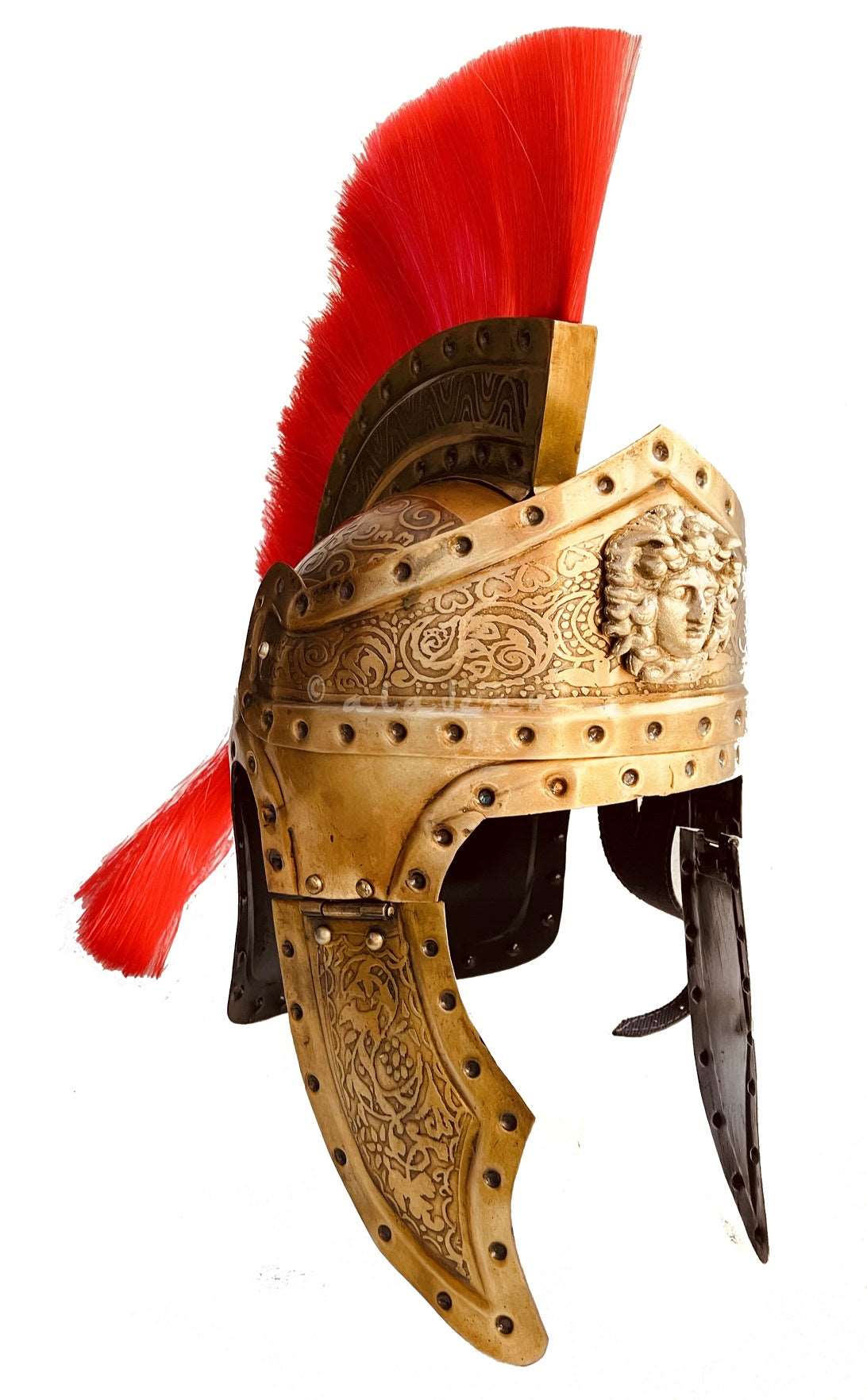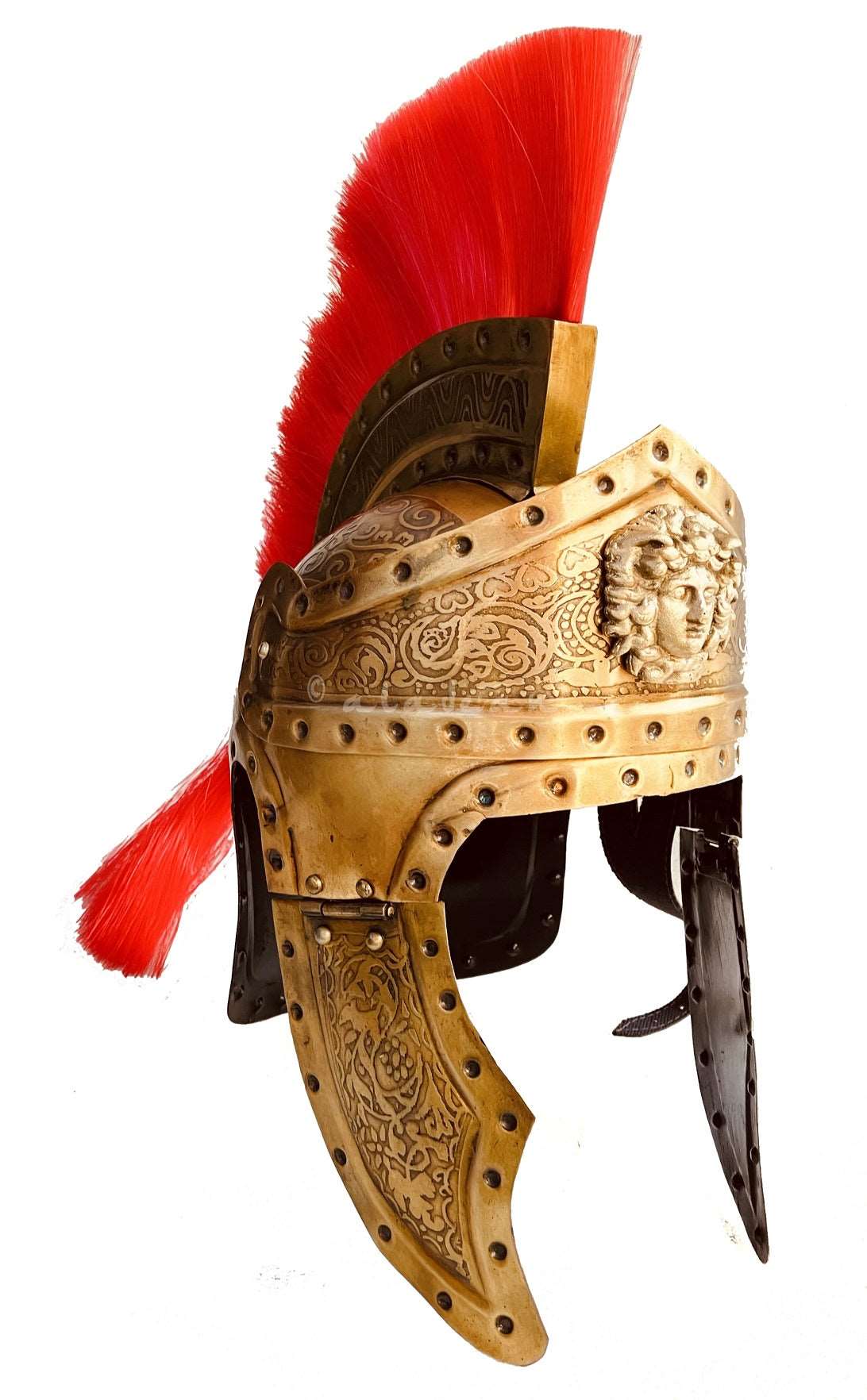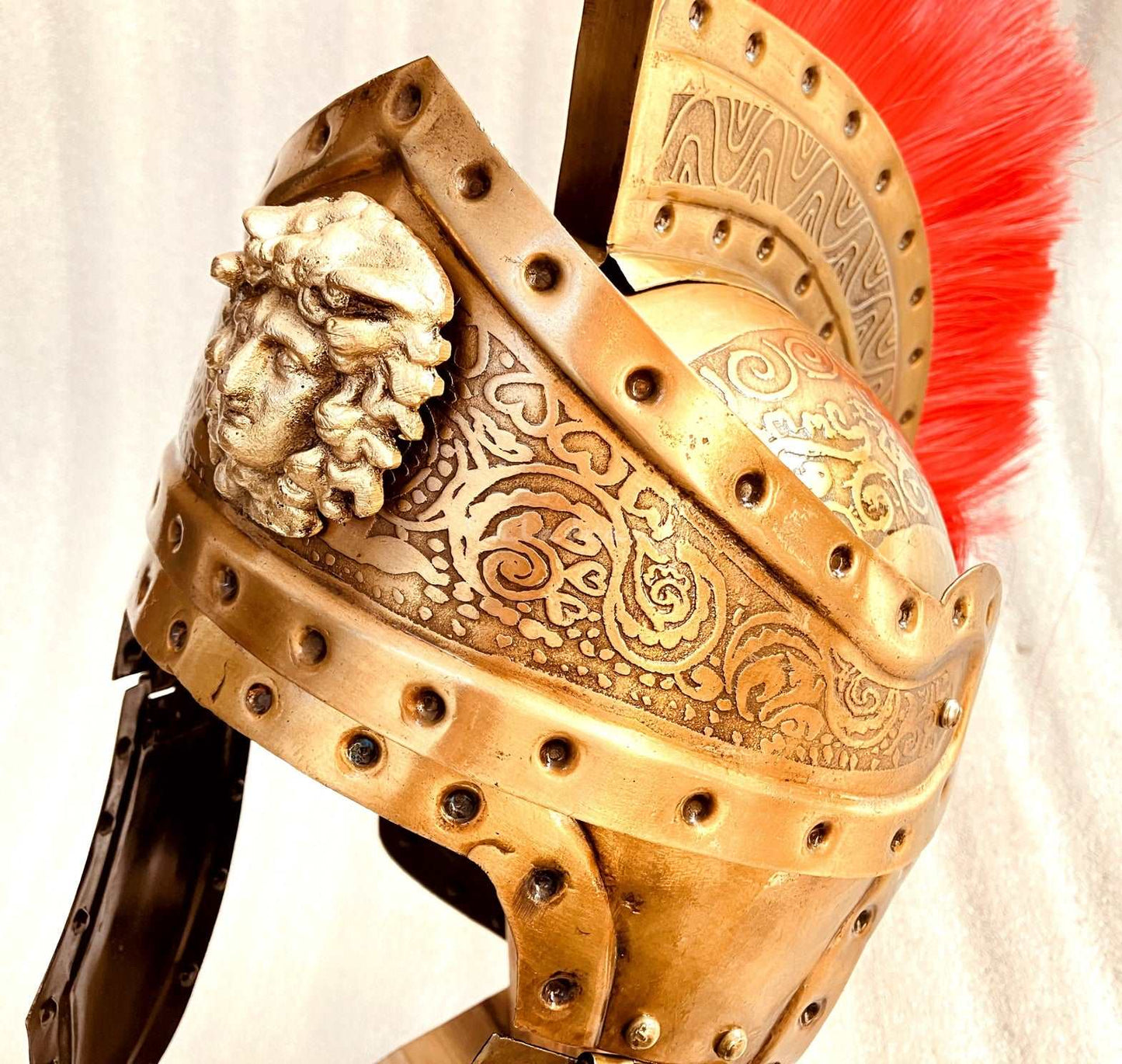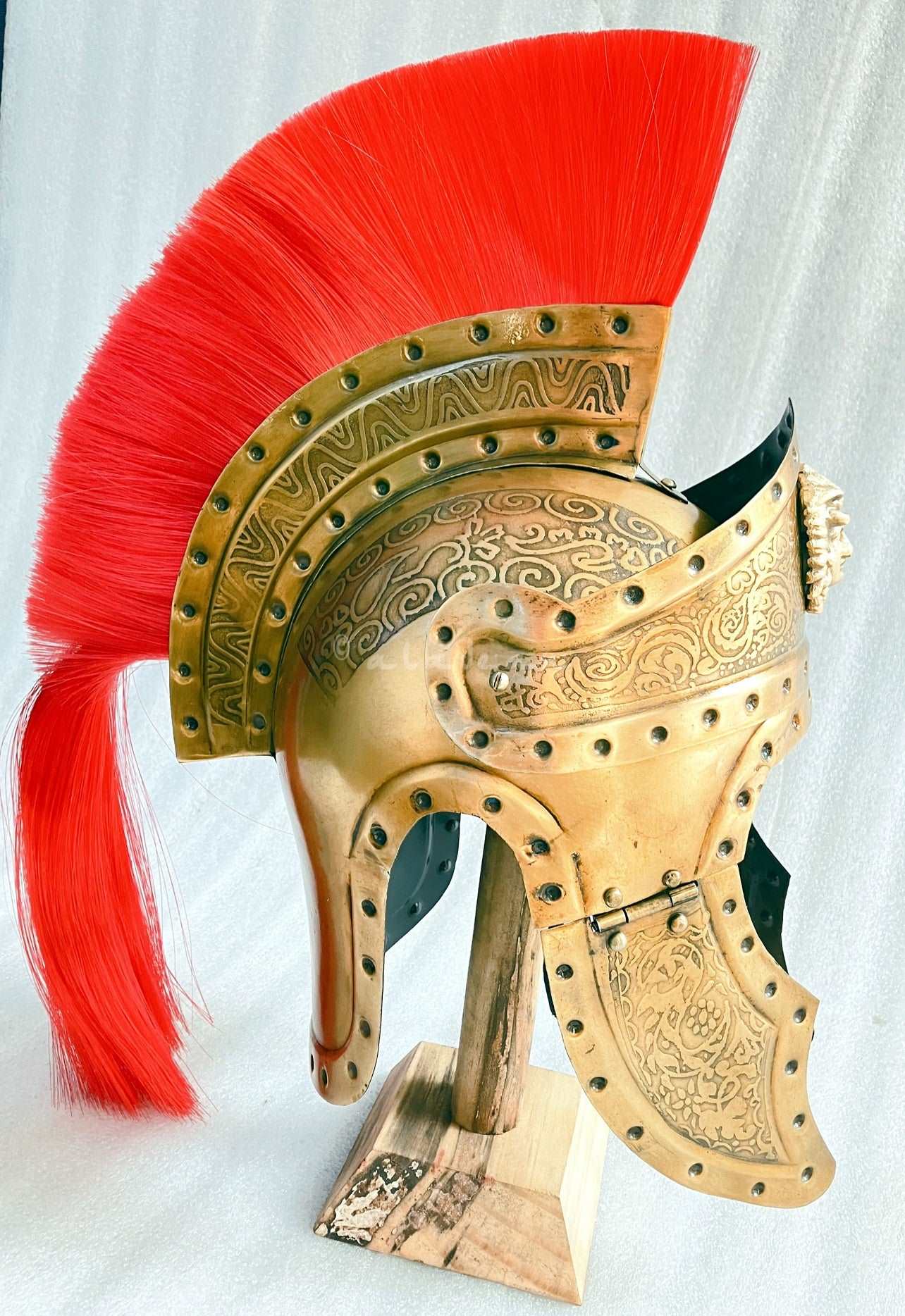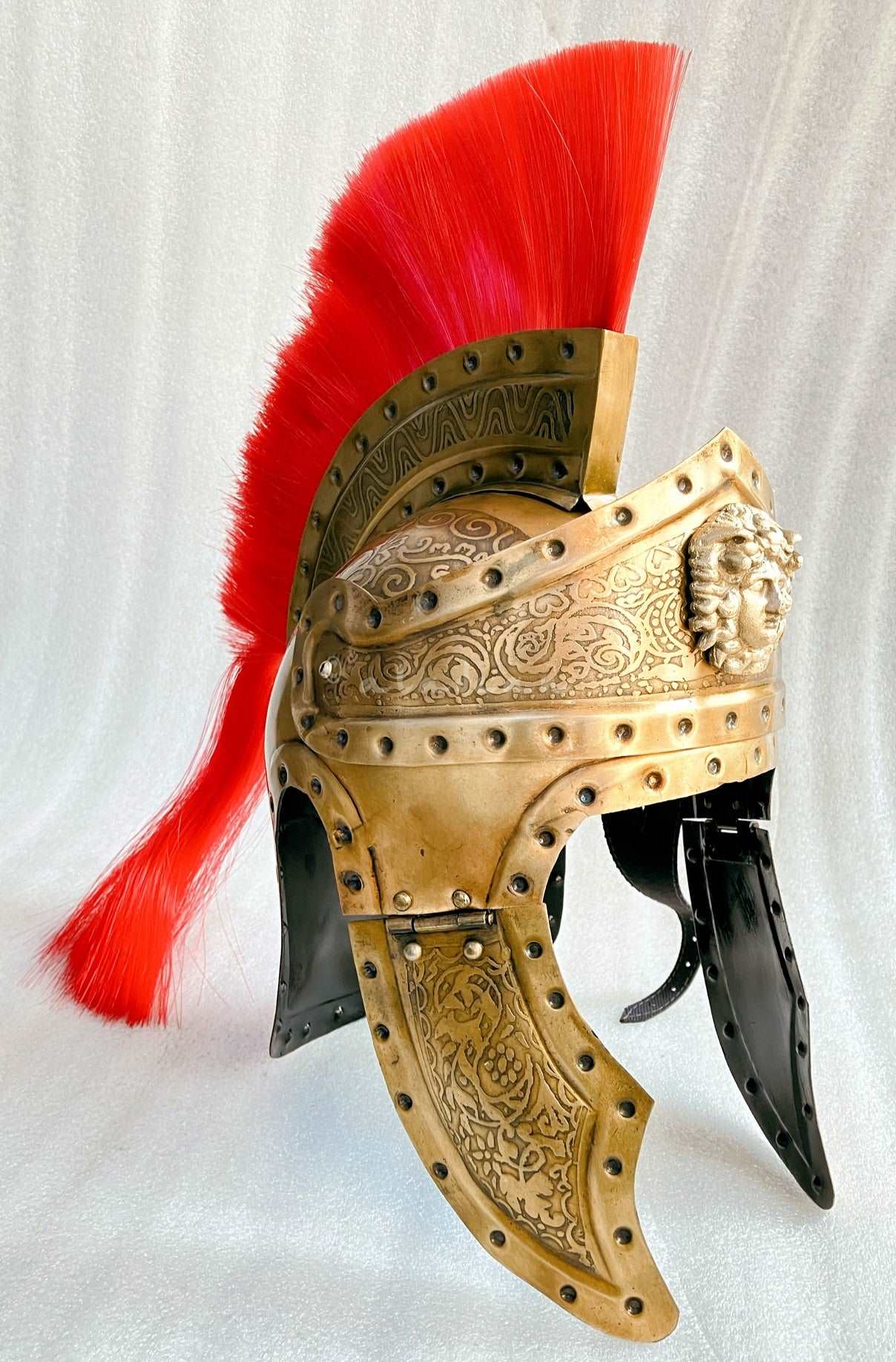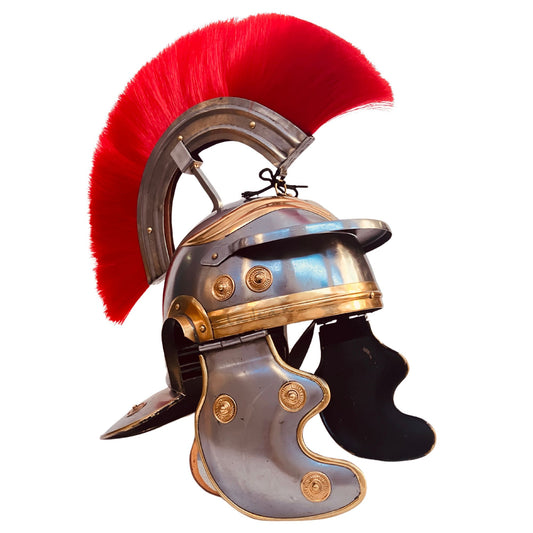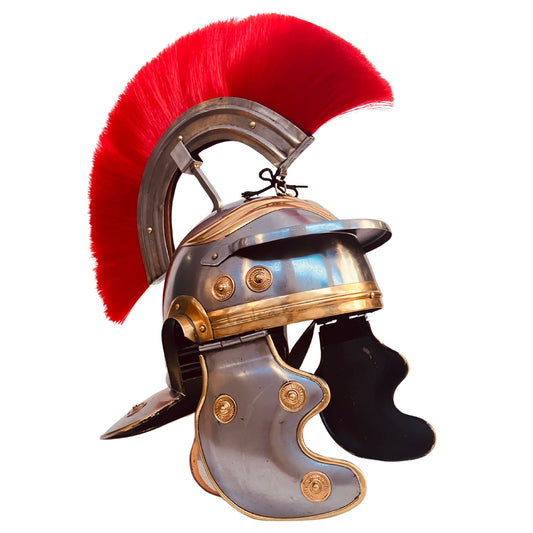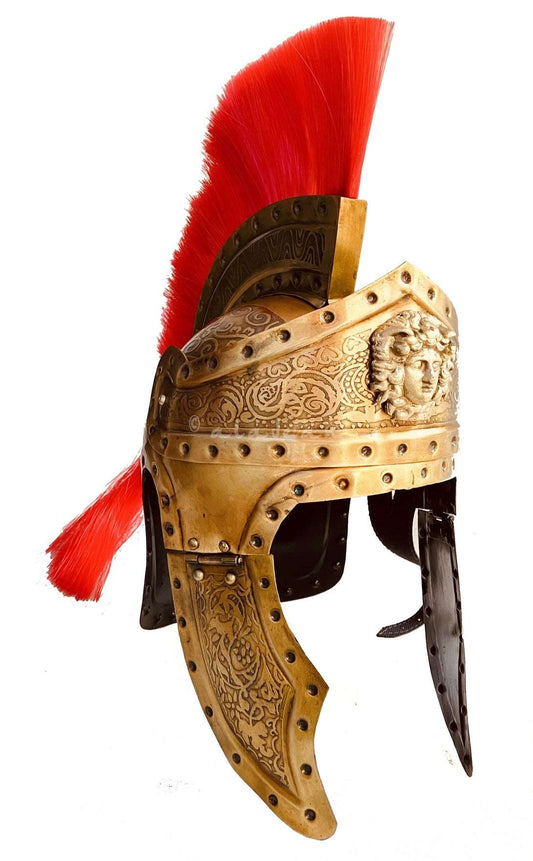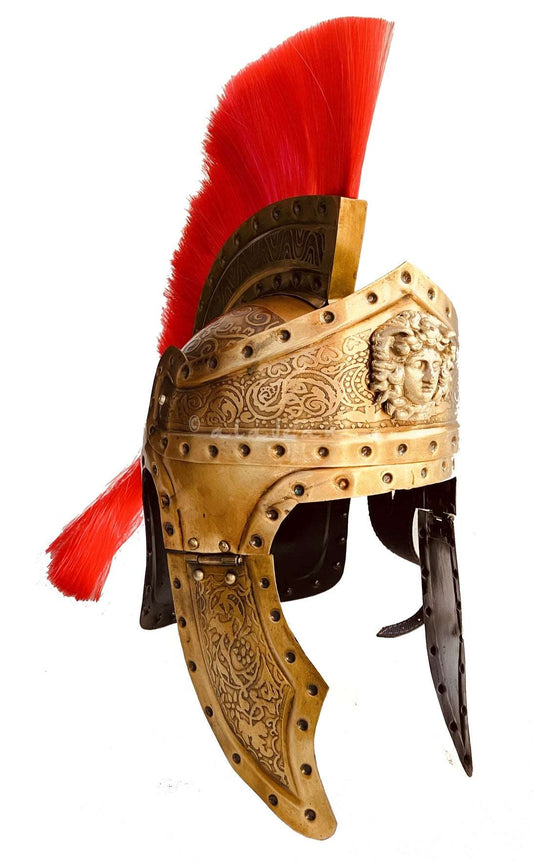The History and Legacy of Roman Armor: Helmets, Suits, and Beyond
Share
The legacy of Roman armor, with its distinctive helmets and suits,
is a captivating subject that continues to intrigue historians, reenactors, and enthusiasts of ancient warfare. The evolution of Roman military gear from functional battlefield necessities to iconic symbols of Roman prowess and culture is a testament to the innovative spirit and martial might of one of history's most formidable empires. This detailed exploration will delve into the history of Roman helmets and armor, highlight notable figures and their gear, examine their representation in modern media, and discuss their contemporary relevance in reenactments and events. Additionally, we will showcase the high-quality reproductions available from Aladean's store, a preferred brand for reenactors and history enthusiasts.
History of Roman Helmets and Armor
Early Roman Armor
The earliest Roman soldiers, known as hoplites, wore armor influenced by the Greeks, including a round shield (clipeus) and a bronze helmet. As Rome's military tactics evolved, so did its armor. The iconic lorica segmentata, a segmented armor, became standard during the Roman Empire, offering both flexibility and protection.
Evolution of Roman Helmets
Montefortino Helmet (4th Century BC - 1st Century AD)
The Montefortino helmet, named after a site in Italy where many were found, was one of the earliest types of Roman helmets. It was characterized by a conical shape, a knob on top, and cheek plates. This helmet offered significant protection and was widely used by Roman soldiers.
Coolus Helmet (3rd Century BC - 1st Century AD)
The Coolus helmet, evolving from the Montefortino, was a bronze helmet with a simpler, rounded design. It provided better coverage and comfort, making it popular among Roman infantry.
Imperial Gallic Helmet (1st Century BC - 2nd Century AD)
Perhaps the most iconic, the Imperial Gallic helmet was made of iron and featured a distinctive crest holder. It was used extensively by Roman legionaries and signified a well-trained and disciplined army. This helmet combined aesthetic appeal with practical features, such as a reinforced brow and cheek guards.
Imperial Italic Helmet (1st Century BC - 3rd Century AD)
Similar to the Imperial Gallic, the Imperial Italic helmet had regional variations and minor differences in style and decoration. Both helmets are frequently depicted in Roman sculpture and reliefs, symbolizing the might of the Roman legions.
Famous Roman Leaders and Their Armor
Julius Caesar
Julius Caesar, a military genius and pivotal figure in Roman history, often wore armor that symbolized his status and power. While specific details of his armor are less documented, artistic depictions show him in a decorated cuirass, often with an elaborate helmet adorned with a horsehair crest.
Augustus
The first Roman Emperor, Augustus, is frequently depicted in a lorica segmentata, emphasizing his role as a military leader. His armor was both functional and symbolic, designed to project strength and divine favor.
Marcus Aurelius
The philosopher-king Marcus Aurelius, known for his stoic writings, was also a capable military leader. His armor was typical of the period, featuring the lorica segmentata and an Imperial Gallic helmet, emphasizing the continuity and stability of the Roman Empire.
Roman Armor in Modern Media
Roman armor has captured the imagination of filmmakers and TV producers, becoming a staple in historical dramas and epic tales. Here are some notable examples:
"Gladiator" (2000)
Ridley Scott's "Gladiator" is perhaps the most famous modern depiction of Roman armor. The protagonist, Maximus, portrayed by Russell Crowe, wears a mix of historically inspired and artistically modified armor, including the Imperial Gallic helmet. The film's attention to detail brought Roman military gear into popular culture, inspiring countless replicas and Halloween costumes.
"Rome" (2005-2007)
The HBO series "Rome" provides a detailed portrayal of Roman life, including military attire. The show features various types of Roman helmets and armor, accurately reflecting the historical period and adding to the immersive experience of the narrative.
"Spartacus" (2010-2013)
The TV series "Spartacus" showcases the brutality and grandeur of Roman gladiatorial combat and military expeditions. The armor and helmets worn by characters like Spartacus and his Roman adversaries are a mix of historical accuracy and creative license, contributing to the show's dramatic flair.
Roman Helmets and Armor in Modern Events and Culture
Reenactments and Living History
Reenactments and living history events are popular in many countries, including the United States, United Kingdom, France, Germany, Italy, and Poland. Enthusiasts don Roman armor to recreate historical battles and daily life in ancient Rome. These events provide an educational and immersive experience, allowing participants and spectators to connect with history.
Halloween Costumes and Decorations
Roman helmets and armor are popular choices for Halloween costumes. Their distinctive look and historical significance make them appealing for those wanting to stand out. High-quality replicas and affordable versions are widely available, allowing anyone to embody a Roman soldier or gladiator for a night.
Theatrical Productions and LARP
Live Action Role-Playing (LARP) and theatrical productions often incorporate Roman armor for authenticity and dramatic effect. Aladean's handmade Roman helmets and suits of armor are preferred by enthusiasts for their quality and attention to detail, making them ideal for both professional and amateur productions.
The Relevance of Roman History Today
Cultural Impact
Roman history has a profound impact on Western culture, influencing everything from legal systems to architectural styles. The Roman Empire's legacy is seen in modern governance, language, and engineering, making its history continually relevant.
Educational Value
Studying Roman history offers valuable lessons in governance, military strategy, and societal organization. The rise and fall of the Roman Empire provide insights into the complexities of human civilization, making it a critical area of study in schools and universities.
Aladean's Handmade Roman Armor
Quality and Craftsmanship
Aladean is renowned for its meticulously crafted Roman helmets, suits of armor, lorica segmentata, chestplates, and shields. Each piece is handmade with attention to historical accuracy and durability, making them a preferred choice for reenactors, LARP enthusiasts, and theater productions.
Product Highlights
Imperial Gallic Face Roman Helmet
The Imperial Gallic Face Roman Helmet from Aladean is a stunning reproduction of one of the most iconic Roman helmets. It features a crest holder and intricate detailing, making it perfect for display or reenactment.
Royal Roman King Army Praetorian Guard Helmet
The Royal Roman King Army Praetorian Guard Helmet is another exceptional piece from Aladean. This helmet exemplifies the grandeur and authority of the Roman elite guard, ideal for collectors and history enthusiasts.
Lorica Segmentata
Aladean's lorica segmentata offers a high-quality reproduction of the famous segmented armor. It is designed for both functionality and historical accuracy, suitable for reenactments and display.
Finally I Would Say,
The history of Roman helmets and suits of armor is a fascinating journey through the evolution of military gear, reflecting the ingenuity and power of the Roman Empire. From the early Montefortino helmets to the sophisticated Imperial Gallic designs, Roman armor continues to captivate modern audiences through films, reenactments, and cultural events.
Aladean's handmade Roman helmets and suits of armor stand out for their quality and historical fidelity, making them the go-to choice for enthusiasts worldwide. Whether for reenactments, theatrical productions, or as unique decorative pieces, these meticulously crafted items keep the legacy of Rome alive in contemporary culture.
The enduring relevance of Roman history is a testament to its profound impact on modern society, offering valuable lessons and a rich cultural heritage that continues to inspire and educate. Whether you are a history buff, a reenactor, or simply someone who appreciates the artistry of ancient craftsmanship, the allure of Roman armor is undeniable.
For those looking to explore this fascinating aspect of history further, Aladean's store offers a wide range of high-quality reproductions that bring the grandeur and legacy of Roman military gear to life. Visit their collection to discover the perfect piece for your collection or next event: Aladean Roman Helmets and Armor.





